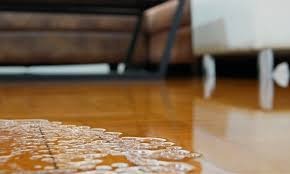Water Damage Restoration and Its Effect on Indoor Air Quality

Water damage in homes and buildings is a significant issue that often requires immediate and effective restoration efforts. Beyond the visible damage, water infiltration can severely impact indoor air quality (IAQ), leading to potential health concerns. We will explore how water damage restoration plays a crucial role in maintaining good IAQ and mitigating the risks associated with prolonged exposure to water-damaged environments.
Understanding Water Damage and Its Implications
Water damage can stem from various sources, including pipe leaks, roof failures, or natural disasters like floods. Water entering a building can quickly permeate materials such as drywall, wood, and insulation, leading to structural damage. However, the implications extend beyond visible damage. Moisture creates a conducive environment for mold and mildew growth, which can deteriorate indoor air quality. Mold spores can become airborne, leading to respiratory issues and allergic reactions among occupants. Effective restoration addresses the visible damage and the underlying moisture problems to prevent these issues from escalating.
The Restoration Process and Air Quality
IGT National of Plymouth Restoration typically involves several key steps: water extraction, drying, dehumidification, and cleaning. Professionals use powerful pumps and vacuums to remove standing water during water extraction. This step is crucial as it prevents further damage and reduces the risk of mold growth. Drying and dehumidification follow, where air movers and dehumidifiers remove residual moisture from materials and the air. Effective drying is essential in preventing secondary damage and ensuring mold spores do not increase. Finally, cleaning and sanitizing the affected areas helps remove contaminants, which can contribute to better air quality once the restoration is complete.
Impact of Moisture on Indoor Air Quality
Prolonged exposure to moisture can significantly affect indoor air quality. Damp environments are a breeding ground for mold, which releases spores into the air. These spores can cause various health problems, from minor allergic reactions to more severe respiratory issues. In addition to mold, other microbial contaminants, such as bacteria and fungi, may thrive in damp conditions, compromising air quality. Addressing moisture issues promptly is essential in preventing these contaminants from spreading and impacting the health of the building’s occupants.
Role of Air Filtration in Restoration
Air filtration is a critical component of the water damage restoration process. High-efficiency particulate air (HEPA) filters often capture airborne particles, including mold spores, dust, and other allergens. Air scrubbers, which use HEPA filters, are deployed during the restoration process to clean the air of these contaminants. Effective air filtration helps to reduce the concentration of harmful particles in the air, thereby improving indoor air quality. Using properly maintained and appropriately sized air filtration systems is essential to remove contaminants and contribute to a healthier indoor environment effectively.
Chemical Residue and Odor Control
Water damage restoration can also involve addressing chemical residues and odors that may persist even after the initial moisture is removed. Water that comes into contact with various household chemicals, such as cleaning agents or pesticides, can create hazardous residues that need to be neutralized. Also, lingering mold and mildew odors can affect indoor air quality and comfort. Restoration professionals often use specialized cleaning agents and odor-neutralizing products to treat these issues. Ensuring that all chemical residues and odors are effectively managed helps to maintain a pleasant and safe indoor environment, free from the lingering effects of water damage.
Health Implications of Poor Indoor Air Quality
The health implications of poor indoor air quality due to water damage can be significant. Prolonged exposure to mold spores and other contaminants can lead to respiratory conditions such as asthma and chronic bronchitis, especially in sensitive individuals such as children, the elderly, and those with pre-existing health conditions. In some cases, exposure to damp environments can exacerbate existing health issues or lead to new ones, making it crucial to address water damage comprehensively. Restoration efforts focusing on improving air quality can help prevent these health problems and ensure a safer living environment for all occupants.
Preventive Measures and Maintenance
Prevention is key to maintaining indoor air quality and avoiding the need for extensive restoration. Regular inspections of potential water intrusion points, such as roofs, plumbing systems, and basements, can help identify and address issues before they lead to significant damage. Proper maintenance of these systems, including cleaning gutters and ensuring good ventilation, can prevent moisture buildup and minimize the risk of water damage. Additionally, installing moisture barriers and using dehumidifiers in areas prone to dampness can help maintain a dry environment and protect indoor air quality.
Water damage restoration is a multifaceted process crucial to preserving indoor air quality. From the initial steps of water extraction and drying to the final stages of cleaning and air filtration, each aspect of the restoration process aims to reduce moisture’s impact on air quality. Property owners can effectively manage and mitigate the risks associated with water damage by understanding the link between water damage and indoor air quality and implementing preventive measures. Ensuring thorough restoration is essential in maintaining a healthy and safe indoor environment.





